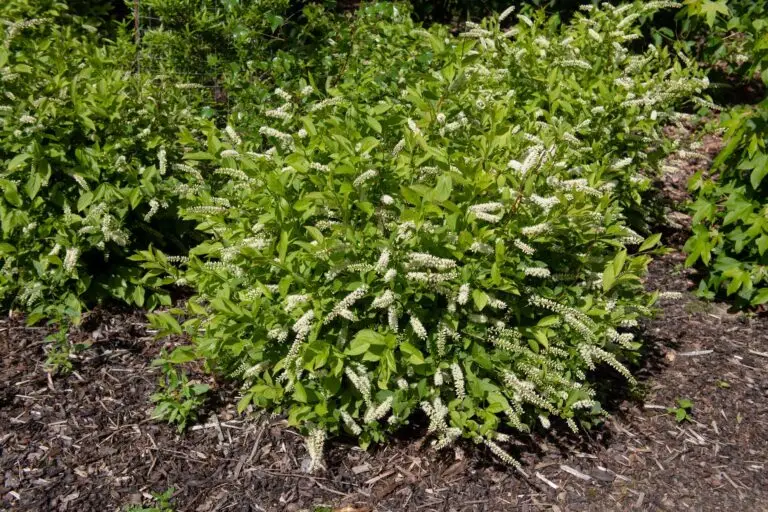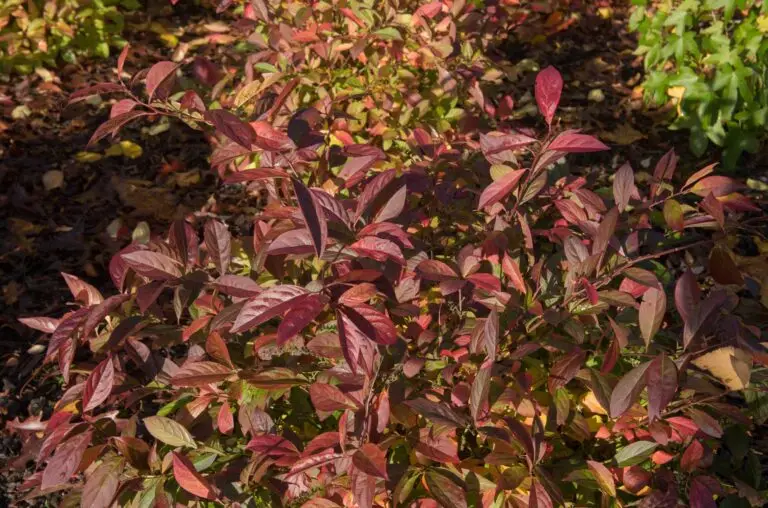What a beautiful shrub! Long, trailing arches of white flowers appear in the spring / early summer, paired beautifully with dark green leaves. In the fall, the leaves turn dramatic shades of purple and red. Virginia Sweetspire is great for borders and edges since it doesn’t get too tall (around 3-5′ in height and width.) Scroll on for landscaping tips and pairing ideas.

Where should I plant Virginia Sweetspire?
Virginia Sweetspire is a great native plant because it can thrive in many environments. To keep it happy, here are some tips for growing:
Virginia Sweetspire likes consistent water
Virginia Sweetspire is a native shrub found along wetlands and stream banks in North America. To mimic this environment, plant in an area that gets consistent water but isn’t too waterlogged. Having some drainage is key to helping it thrive.
Full sun to part shade works well
Virginia Sweetspire is an extremely versatile native shrub, thriving in both full sun and partial shade, making it an ideal choice for various garden settings and beginning gardeners.
Does it remind you of another shrub? There are a few other native bushes that look similar, and are worth considering:
Native shrubs similar to Virginia Sweetspire
There are a few other natives that look and behave similarly to Virginia Sweetspire, with different coloring and heights:

Where is Virginia Sweetspire native?
Virginia Sweetspire is native to a wide swath of the United States, from Pennsylvania south to Florida, and west to Texas.
What are good pairings for Virginia Sweetspire?
Other native plants that pair well with Virginia Sweetspire include Buttonbush, asters, dogwood trees, and American Beautyberry.
And know you know how and where to plant Virginia Sweetspire! This stellar native plant is a beautiful, resilient addition to any garden. Since it’s so pretty, it’s well worth a high-profile place: against homes, entryways, or woodland-inspired landscapes. Happy planting!
Sources
- Nelson, Gil. Best Native Plants for Southern Gardens: A Handbook for Gardeners, Homeowners, and Professionals, (2010).
- Harstad, Carolyn. Go Native! Gardening with Native Plants and Wildflowers in the Lower Midwest. (1999), 209-210.
What if your feed was actually good for your mental health?
Give your algorithm a breath of fresh air and follow us.


























